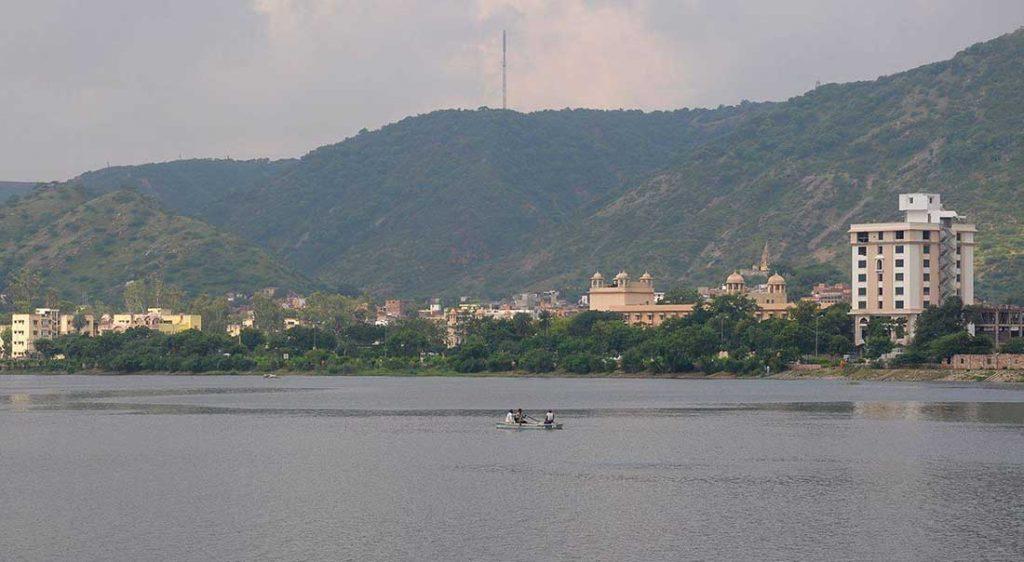This artificial lake adds volumes to the beauty of Jaipur city. Recently Man Sagar Lake has undergone an intensive cleaning which has rendered it to me more beautiful and beaming with migratory birds. In the midst of this lake, stands Jal Mahal, an exquisite piece of architecture with structural base in water. People come here and sit here for hours to enjoy it’s refreshing beauty and aura. In the mornings and evenings, this lake renders the surroundings cooler than the rest of the city, welcoming people to spend time here.
The Mansagar Lake, is a 300-acre lake, surrounded by the Nahargarh hills. The artificial lake was formed as a result of instituting a dam across river Darbhawati during the 18th century. It is today, the only significant water body in the city of Jaipur. Jal Mahal, an architectural monument, is situated in the midst of Mansagar Lake. .
The lake is approximately 130 ha in its full spread. The lake has been a natural habitat for more than 150 species of local and migratory birds. Water provides sustainable living to countless species of the aquatic ecosystem like fish, birds, insects, microorganisms and aquatic vegetation.
The lake suffers from serious problems of siltation and settled deposits, contamination from inflow of wastewater, decrease in surface area due to artificial land formation as a result of eutrophication and loss of water due to the outflow for downstream irrigation during summer. Majority of the sewage is flowing to the lake body untreated and hence there is severe contamination of the ground water in and around the lake area. .
This contamination makes the ground water unfit for drinking and in addition results in a serious health hazard. Moreover, the rainwater mingled with the polluted water of this lake makes it stink. The lake has BOD-20 mg/L and Total nitrogen-20 mg/L.
The Jal Mahal Palace, situated at the middle of the lake was constructed in the 18 the century by the king to shoot the birds as it was once home to diverse wildlife including a large population of flamingo.
But the wildlife started to extinct from the palace as the destructive pollution in 1990, and the intensive farming demands took place. Soon things took a toll, the aquatic wildlife, and the migratory birds made a comeback and the fish stocks are also increasing.
History of Man Sagar Lake
After independence, the lake no more used for entertainment purposes. For decades, the hills surrounding the lake had to undergo large-scale deforestation causing to be nearly bare.

In 1962, the sewage from the enclosed city redirected into the lake. The capacity to store water decreased drastically, and the Jal Mahal palace went underwater to a depth of 3m, the bottom became more profound during the rainy season.
In 1981, heavy rain caused the flood that brought a large number of sediments and sand from the southeastern region that filled a large area of the lake.













32 Comments
Comments are closed.